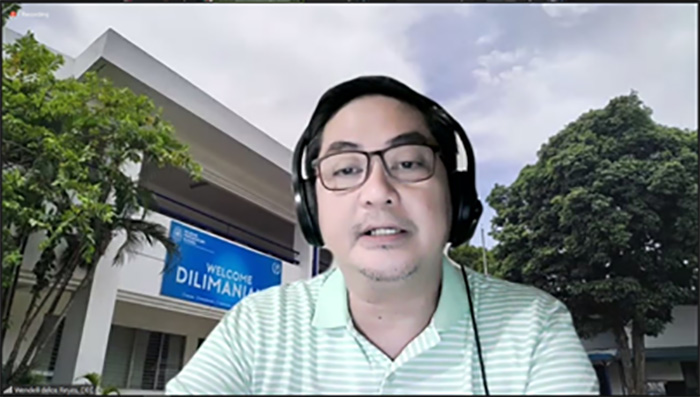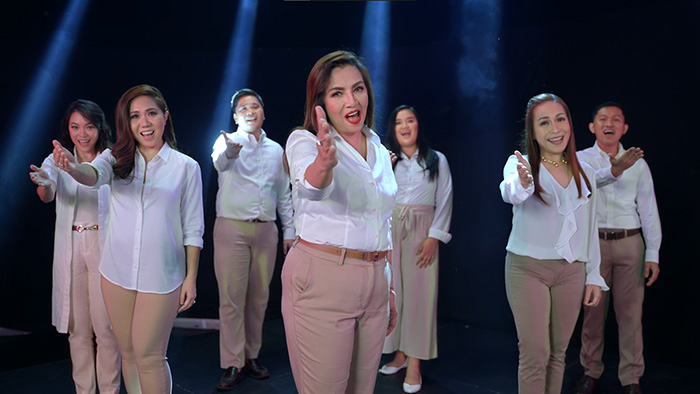“We are preparing students for a workforce and a workplace that we do not know. It’s just constant preparation so whatever that workplace might be in the future, they must be able to address that. We want to produce future-proof students”
BY ANTONIO DELOS REYES
The COVID-19 pandemic has resulted in sweeping changes in our daily lives. Whether it is work or pleasure, norms have shifted and a new normal has started to emerge. The education sector is one of the sectors most affected by the pandemic, with classes taken from physical classrooms, to virtual rooms. “With the onset of the pandemic, learning in Diliman Preparatory School has to continue, even outside the confines of the physical classroom. This is why we have adopted what we call the digitally transformed online learning program,” Wendell Delos Reyes, Diliman Preparatory School (DPS) Vice President said.
However, as the country starts to recover from the effects of the pandemic, schools, students, and parents must prepare for a new form of learning modality, a blended approach which will combine limited face-to-face classes with the current online learning process. This in turn brings new concerns that need to be addressed, especially for younger students that have never experienced attending a physical classroom.
“The role of the teacher is to veer away from the traditional setup of providing all of the information. This is because all the said information is available in the internet, just one click away. Instead, they become facilitators in the classroom. They provide guidance and feedback on the proficiency level of the students on the skills and
competencies that the students have acquired, and to tailor-fit the environment, whether virtual of physical, according to the needs and preferences of the students”
Delos Reyes also believes that the blended learning approach will also give rise to self-paced learning, a teaching theory that allows students to learn at their own pace and design their own learning experience according to their own interests and learning preferences. This is made possible due to the self-starter approach inherent in asynchronous classes and modules that were used in the past 2 years as classes became virtual.
The shift to a self-paced learning approach will also necessitate a change in student-teacher interaction. Unlike traditional teaching methodologies where teachers impart lessons to all students equally, self-paced learning will see teachers take a more passive approach in direct teaching.
“The role of the teacher is to veer away from the traditional setup which providing all of the information. This is because all the said information is available in the internet, just one click away. Instead, they become facilitators in the classroom. They provide guidance and feedback on the proficiency level of the students on the skills and competencies that the students have acquired, and to tailor-fit the environment, whether virtual of physical, according to the needs and preferences of the students,” Delos Reyes noted.
“This is the shift that we are trying to impart to all our teachers and part-time instructors because they have to adapt to that. They’ve been doing well in face to face prior to the pandemic but there was a transition to online. Now, there’s another transition from online to blended learning,” he added.

This sentiment was echoed by Diliman Educational Corporation chair Nikki Coseteng who stated that students thrive when they are comfortable in their surroundings. “The best way to create an atmosphere of learning is highly dependent on the environment which the students are used to. So Diliman Preparatory School has to be flexible. The teachers have to understand this — there are others who don’t want to learn with other people and there are others who need other people, need the noise. What’s important is that students are treated as individuals. They’re not all pencils that need to be sharpened the same way.” she said.
The rapid shift in teaching and education also underpins the uncertainties students will face in the future once they enter the workforce. Learning taught today could be rendered obsolete and skills that would be in demand in the future might not necessarily be the same as today. “We are preparing students for a workforce and a workplace that we do not know. It’s just constant preparation so whatever that workplace might be in the future, they must be able to address that. We want to produce future-proof students,” Coseteng said.





